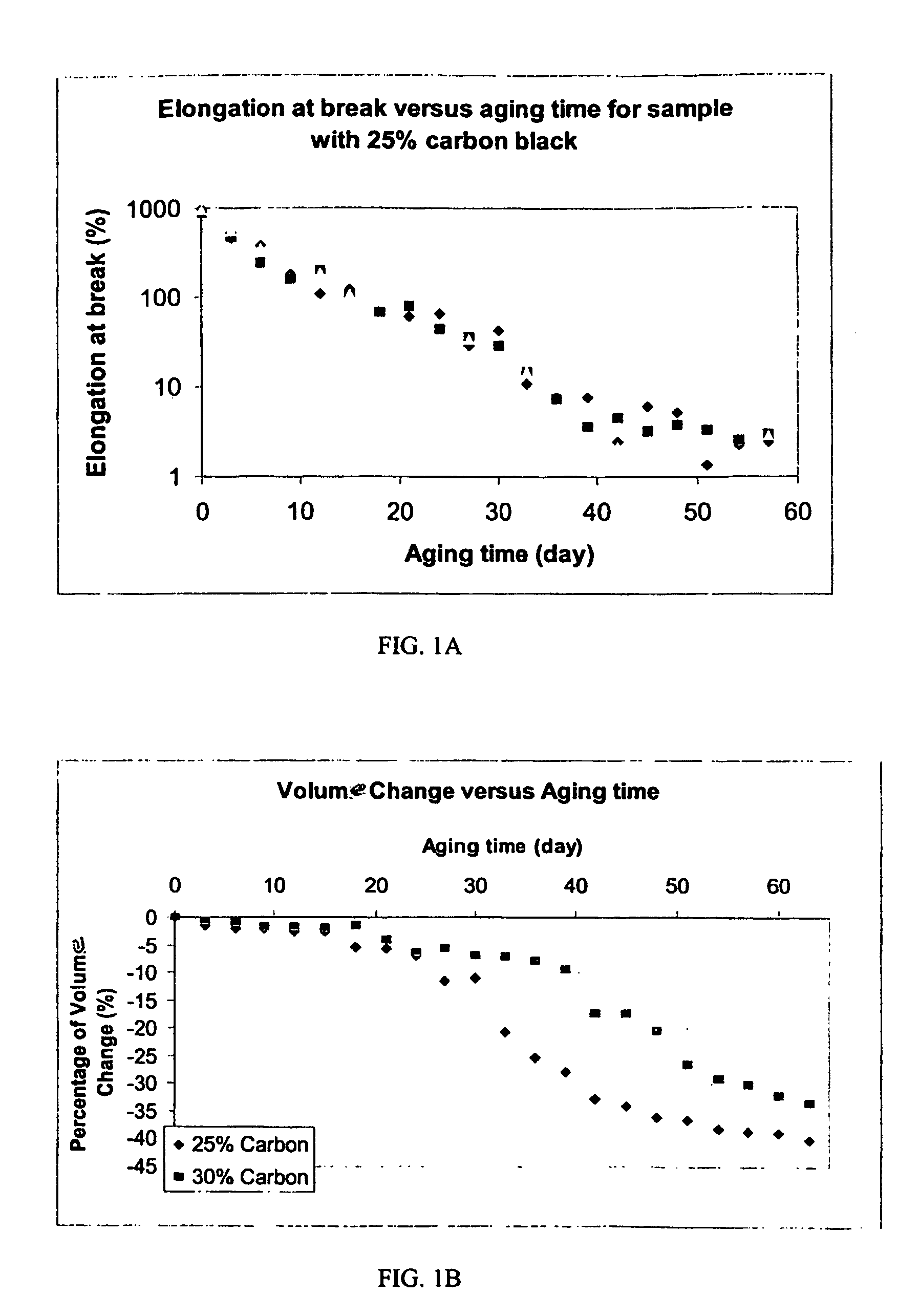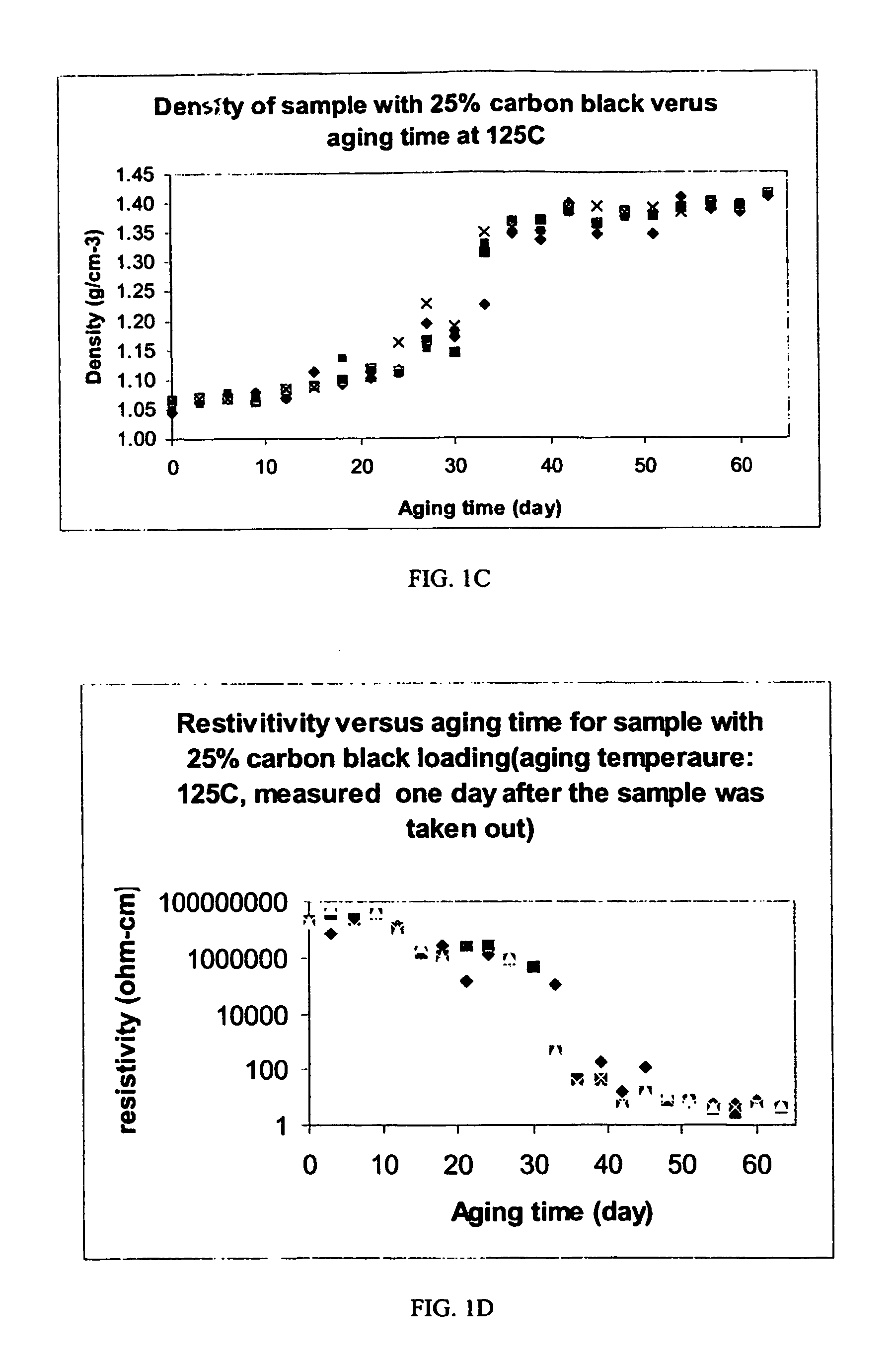Electrical condition monitoring method for polymers
a condition monitoring and polymer technology, applied in the direction of mechanical means, line-transmission details, instruments, etc., can solve the problems of affecting the performance of wire and cable, degrading of polymer materials used in wire and cable insulation and jacketing (and other polymers) with age, and becoming embrittled
- Summary
- Abstract
- Description
- Claims
- Application Information
AI Technical Summary
Benefits of technology
Problems solved by technology
Method used
Image
Examples
examples
[0041]FIGS. 1A, 1B, and 1C show elongation at break, volume change and density of ethylene propylene rubber (EPR) under accelerated thermal aging at 125C. FIG. 1D shows resistivity change for EPR samples under the same aging conditions.
[0042]Use of resistivity data of polymeric composite materials could be used in several ways. For example, accelerated aging of a composite comprising a specific polymer and a given volume fraction of a conductive filler would result in a resistivity vs. time for the test temperature. Measurement of mechanical properties such as elongation at break or hardness as the composite is aged, would provide a relationship of the mechanical property to the resistivity for the composite. This relationship could be determined by the aging curves, such as that of FIGS. 1A, 1B, 1C and 1D showing the value of the mechanical property vs. resistivity. Or, the relationship could be expressed by a mathematical algorithm by curve fitting methods known in the art. By inc...
PUM
| Property | Measurement | Unit |
|---|---|---|
| conductive | aaaaa | aaaaa |
| weight percent | aaaaa | aaaaa |
| electrical property | aaaaa | aaaaa |
Abstract
Description
Claims
Application Information
 Login to View More
Login to View More - R&D
- Intellectual Property
- Life Sciences
- Materials
- Tech Scout
- Unparalleled Data Quality
- Higher Quality Content
- 60% Fewer Hallucinations
Browse by: Latest US Patents, China's latest patents, Technical Efficacy Thesaurus, Application Domain, Technology Topic, Popular Technical Reports.
© 2025 PatSnap. All rights reserved.Legal|Privacy policy|Modern Slavery Act Transparency Statement|Sitemap|About US| Contact US: help@patsnap.com



